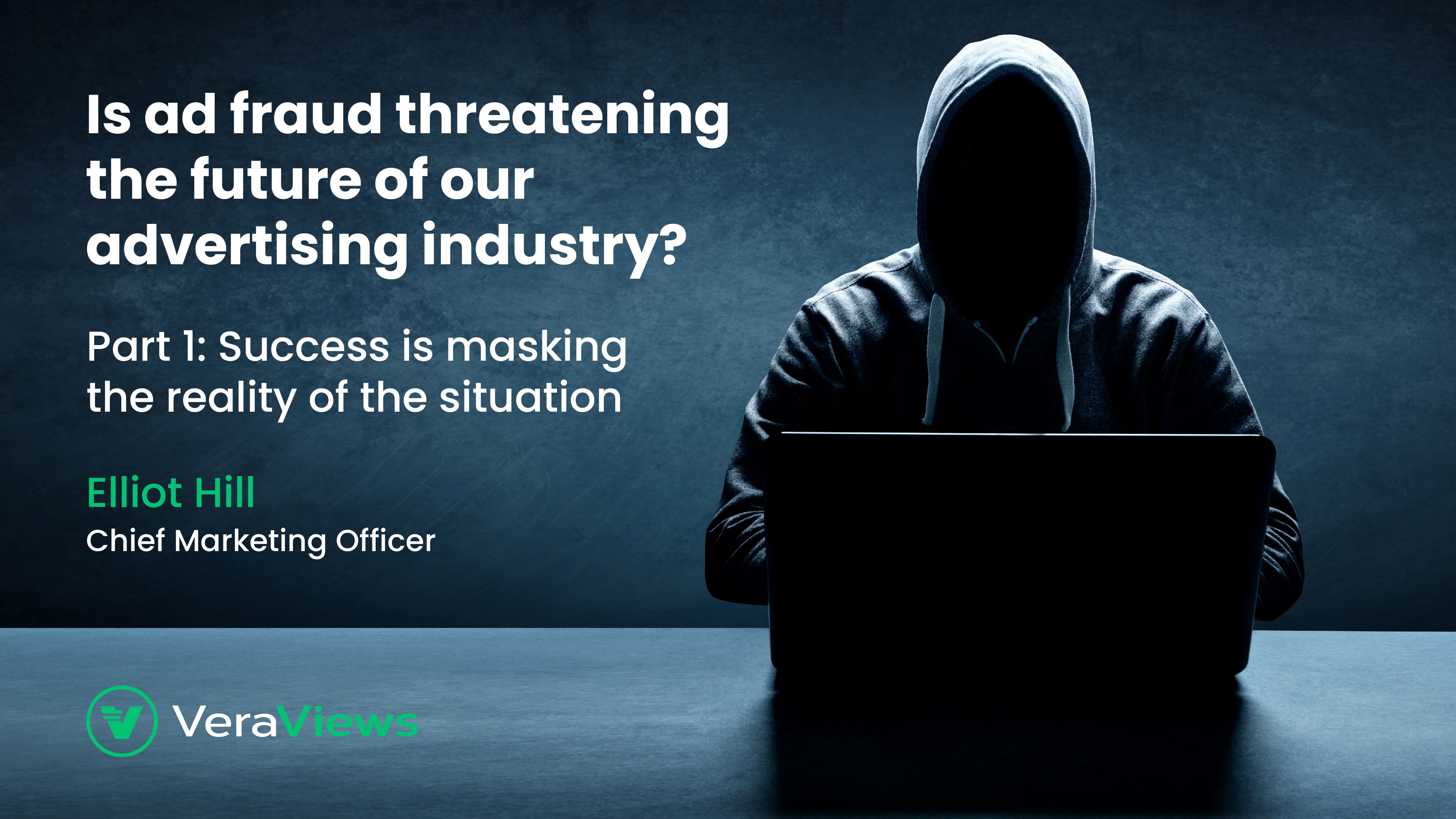Is ad fraud threatening the future of our advertising industry? Part 1
- Wednesday, May 3rd, 2023
- Share this article:
In the first of a two-part series looking at the growing problem of ad fraud, Elliot Hill, Chief Marketing Officer at VeraViews, argues that the success the UK ad ndustry is enjoying is masking the reality of the situation.
 The advertising industry in the United Kingdom is experiencing remarkable growth, yet simultaneously faces an increasingly concerning threat: ad fraud. If not addressed promptly, this deceptive practice has the potential to severely undermine the success of this otherwise thriving sector. But are we doing enough to stop it?
The advertising industry in the United Kingdom is experiencing remarkable growth, yet simultaneously faces an increasingly concerning threat: ad fraud. If not addressed promptly, this deceptive practice has the potential to severely undermine the success of this otherwise thriving sector. But are we doing enough to stop it?
For anyone working in London, Europe’s advertising mecca, there’s little doubt that the UK is an advertising behemoth; recognised as the fourth largest ad market worldwide after the USA, China, and Japan, the UK channels over a quarter of the entire European economic area’s total advertising spend. And with more than 7,200 advertising and ad tech companies calling the UK home, the importance of advertising to the UK economy cannot be overstated.
According to data released in the ONS’s 2022 non-financial business economy report, the combined turnover of the UK advertising industry now exceeds some £95bn*, representing more than 3.5 per cent of the UK’s total GDP, while employing close to 200,000 people.
And it continues to grow rapidly. Data from the IAB shows that digital ad spend surged to £23.5bn in 2021 – a 41 per cent increase from 2020 – with no sign of slowing.
But amid this heady and rapid growth, another area of advertising is also proliferating and going unchecked – ad fraud.
Not everything’s rosy in the garden
In 2020, it was discovered that from a yearly spend of £16.5bn, at least £1.3bn was lost to advertising fraud in the UK. Within this, 15 per cent of ad spend in the programmatic market was found to be ‘unattributable’. At the time, this led to calls for increased transparency in the advertising supply chain, with the Director General of ISBA, Phil Smith, calling for greater auditability.
Fast forward three years, and the problem is worse than ever. The global cost of advertising fraud now stands at a staggering $65bn (~£54m), with the UK recording the third-largest economic losses to ad fraud, despite being the fourth-largest market.
To put the scale of this issue into perspective, the estimated global cost of ad fraud is double that of payment card fraud, an area that receives widespread attention and has been the subject of coordinated action. Yet ad fraud has received little attention from government and regulators and in the mainstream consciousness.
That’s because, at a high level, it’s easy to ignore the problem. While the advertising industry remains profitable and growing, ad fraud has typically remained hidden – viewed as an internal industry issue and a burden that brands and publishers must bear. But now, amid political troubles, geopolitical instability and economic uncertainty, the stakes are higher than ever. Now the issue is becoming political, and another UK industry could be under threat.
Compliance, crime, and complicity
It’s widely known that fraudsters are making off with billions from ad fraud – so much so that it’s beginning to rival the drugs trade in its importance to organised crime rings. But where do these ill-gotten gains end up?
As most advertising fraud goes undetected, and brands frequently and unwittingly pay for invalid traffic, the revenue generated from it usually makes its way through legitimate ad marketplaces and content delivery networks. That means the perpetrators pocket the proceeds using the traditional financial infrastructure in a relatively ‘clean’ and untraceable manner.
It’s unlikely that any legitimate organisation is knowingly complicit in ad fraud. However, it potentially implicates any third-party service facilitating fraudulent transactions in this increasingly sophisticated environment, leaving the burden of proof on brands, networks, and publishers to show they aren’t acting illegally by association.
Across the pond, efforts have already been made to stem the flow of money through fraudulent advertising networks and publishers. In 2018, the FBI cracked down on ad fraud perpetrators and the financial institutions that enabled them. In the UK, however, similar efforts are yet to be set in motion by the National Crime Agency or regulators, due to limited solutions and resources. But against a shifting political landscape, these issues are now coming to the fore.
In May 2022, the UK Government, through the Online Safety Bill, highlighted its plans to bring fraudulent ads on social media and search engines into lawmakers scope, whether controlled by the platforms themselves or by an advertising intermediary. And what’s crucial here for the industry is the term ‘advertising intermediary’, which can be interpreted as any stakeholder or participant in the advertising funnel. In other words, if you can’t prove you are preventing fraudulent ads or invalid traffic, you may find yourself landed with a hefty fine.
In its narrowest definition, this part of the bill is designed to clamp down on blatantly fraudulent ‘malvertising’ – think unlicensed financial advice or dangerous diet pills. However, it opens the door to a serious and far-reaching oversight of all types of advertising fraud. More importantly, it takes the unprecedented step of holding platforms financially accountable for facilitating it.
With such a rapid rise in ad fraud, this could potentially impact every participant in the advertising supply chain, leaving the UK ad industry in urgent need of a solution if it’s to remain compliant.
In Part 2, tomorrow afternoon, I’ll explore what a failure to secure a solution might mean, and what needs to be done to save our industry.
















